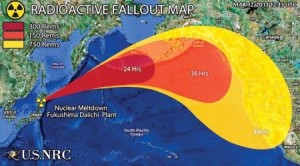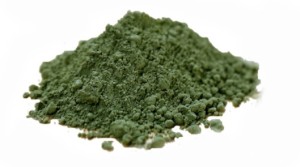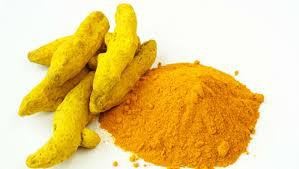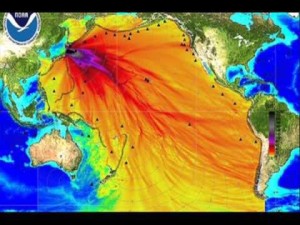What Can You do to Minimize Your Risks of Radiation Exposure?
First and foremost, if you live in an area with elevated levels in drinking water, be sure you either find an alternative source of water – such as your nearest natural spring16 – or filter it with a high-quality filter. When it comes to radiation, reverse osmosis is effective at removing most particles from your water.
If you’re looking for strategies to help prevent damage caused by radiation exposure, researchers noted in the International Journal of Low Radiation17 that the most active molecular form of vitamin D – D3 (also known as calcitriol) – may offer protection against a variety of radiation-induced damages, including even those caused by background radiation or a low-level nuclear incident.
The protective mechanisms are so strong that researchers suggested vitamin D3 should be considered among the prime (if not the primary) non-pharmacological agents to protect against sub-lethal low radiation damage and, particularly, radiation-induced cancer.
Spirulina
Spirulina– a blue-green algae – might be another useful alternative to protect against the effects of radiation. Spirulina was actually used to treat children exposed to chronic low levels of radiation after the Chernobyl nuclear disaster.
According to a scientific review of spirulina’s benefits:18
“Up to very recently, the interest in Spirulina was mainly in its nutritive value. Currently, however, numerous people are looking into the possible therapeutic effects of Spirulina. Many pre-clinical studies and a few clinical studies suggest several therapeutic effects ranging from reduction of cholesterol and cancer to enhancing the immune system, increasing intestinal lactobacilli, reducing nephrotoxicity by heavy metals and drugs and radiation protection.”
But what is it about this blue-green algae that gives it this radiation-protective capacity? Spirulina has a 16 percent Phycocyanin content – a blue pigment that is attached to its photosynthetic membranes. Phycocyanin is also a nitrogen storage molecule. The nitrogen atoms can form a complex with heavy metals such as radioactive cesium and stronium, hence “cleansing” these radioactive metals from your body.
Turmeric
Turmericcontains a broad spectrum of water, fat and alcohol-soluble components, all of which may contribute to reducing damage associated with both external radiation and internalized radioisotope exposures. It accomplishes this primarily through reducing oxidative stress to cellular structures, particularly DNA.
Research demonstrates that it has significant radioprotective properties, and of particular importance in selecting a turmeric product is that it be certified organic to ensure it has not been gamma irradiated (ironic?) with radioactive cobalt-60 in the USDA-approved process known as “cold pasteurization.” Conventional spices are commonly exposed to as high as 30 Kilograys of gamma radiation, or the equivalent of 990 million chest x-rays worth of radiation. The irradiation of herbs produces formic acid, formaldehyde and unique radiolytic byproducts with carcinogenic properties.
Whey
interview Ori Hofmekler for an alternative viewpoint with regard to how you can decrease the risk to your health from radiation. Ori makes some compelling arguments for the use of a high-quality Whey Protein Concentrate to help protect against absorbing radioactive minerals.
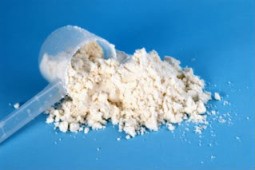
One of the reasons for using sweet whey is because whey protein contains all the precursors that help your body produce Glutathione, which is one of the best ways to detoxify these toxins. The other reason is it’s the highest source of all minerals and trace minerals that exist in nature. It has every possible mineral and trace elements – including organic sodium – that your body needs in the most bioactive form.
Other Herbs and Supplements
In general, the following foods, herbs and supplements may also help support your overall health in the event of radiation exposure:
| Ginseng | Kelp and other seaweeds (high in natural iodine) | Zeolites (to neutralize radiation) or bentonite clays |
| Ashwaganda (an adaptogenic herb) | Fulvic Acid | Reishi mushrooms (strong immune support) |
| High-dose vitamin C | Magnesium | Selenium |
| Coconut oil, which supports optimal thyroid health | Astaxanthin (has some protective function against ionizing radiation) | Chlorella (contains chlorophyll, which will increase your resistance to radiation) |
Internationally renowned natural health physician and Mercola.com founder Dr. Joseph Mercola and Ori Hofmekler discuss radiation protection.
View the Evidence: Ailments
Protracted exposureto low-dose gamma radiation is significantly associated with leukaemia.
Click here to read the entire abstract
Pubmed Data : Occup Environ Med. 2010 Oct 8. Epub 2010 Oct 8. PMID: 20935290
Article Published Date : Oct 08, 2010
Study Type : Meta Analysis
Additional Links
Diseases : Leukemia : CK(690) : AC(258), Radiation Induced Illness : CK(1018) : AC(249)
Anti Therapeutic Actions : Radation Exposure: Low-Dose : CK(55) : AC(9)
Seaweed has a suppressive effect on radioactive iodine uptake in rats.
Click here to read the entire abstract
Pubmed Data : J Cancer Res Clin Oncol. 1992;118(6):447-52. PMID: 1344008
Article Published Date : Jan 01, 1992
Study Type : Meta Analysis
Additional Links
Substances : Fiber : CK(484) : AC(70), Seaweed : CK(94) : AC(18)
Diseases : Radiation Induced Illness : CK(1018) : AC(249), Thyroid Diseases : CK(182) : AC(23)
Pharmacological Actions : Radioprotective : CK(458) : AC(183)
Apple pectin reduced Cesium-137 levels by 62.6% in “Chenobyl” children.
Click here to read the entire abstract
Pubmed Data : Swiss Med Wkly. 2004 Jan 10;134(1-2):24-7. PMID: 14745664
Article Published Date : Jan 10, 2004
Study Type : Human Study
Additional Links
Substances : Apple Pectin : CK(55) : AC(13)
Diseases : Radiation-Induced Illness: Cesium-137 Exposure : CK(96) : AC(25)
Pharmacological Actions : Radioprotective : CK(458) : AC(183)
***
Fukushima Update | Nuclear News from Japan
An Internet search turns up an astounding number of pages about radiation from Japan’s Fukushima Daiichi nuclear power plant meltdown that followed an earthquake and tsunami in March 2011. But it’s difficult to find credible information.
One reason is that government monitoring of radiation and its effects on fish stocks “appears to be limited.” According to the Woods Hole Oceanographic Institution, “No U.S. government or international agency is monitoring the spread of low levels of radiation from Fukushima along the West Coast of North America and around the Hawaiian Islands.”
The U.S. Food and Drug Administration’s most recent food testing, which includes seafood, “appears to be from June 2012.” Its website states, “FDA has no evidence that radionuclides from the Fukushima incident are present in the U.S. food supply at levels that would pose a public health concern. This is true for both FDA-regulated food products imported from Japan and U.S. domestic food products, including seafood caught off the coast of the United States.”
The disaster isn’t over. Despite the Japanese government’s claim that everything is under control, concerns have been raised about the delicate process of removing more than 1,500 nuclear fuel rod sets, each containing 60 to 80 fuel rods with a total of about 400 tonnes of uranium, from Reactor 4 to a safer location, which is expected to take a year. Some, including me, have speculated another major earthquake could spark a new disaster. And Reactors 1, 2, and 3 still have tonnes of molten radioactive fuel that must be cooled with a constant flow of water.
A radioactive plume is expected to reach the West Coast sometime this year [or it has already arrived], but experts say it will be diluted by currents off Japan’s east coast and, according to the Live Science website, “the majority of the cesium-137 will remain in the North Pacific gyre—a region of ocean that circulates slowly clockwise and has trapped debris in its center to form the ‘Great Pacific Garbage Patch’—and continue to be diluted for approximately a decade following the initial Fukushima release in 2011.”
With the lack of data from government, the Woods Hole Oceanographic Institution is asking the public for help. In January, Ken Buesseler, senior scientist and director of the Center for Marine and Environmental Radiation (CMER) at the U.S.-based non-profit, launched a fundraising campaign and citizen science website to collect and analyze seawater along North America’s West Coast.
“Whether you agree with predictions that levels of radiation along the Pacific Coast of North America will be too low to be of human health concern or to impact fisheries and marine life, we can all agree that radiation should be monitored, and we are asking for your help to make that happen,” Buesseler said in a news release.
Resources:
For additional research on natural substances with experimentally confirmed radioprotective properties you can visit GreenMedInfo.com’s Radiation Disaster Associated Toxicity | GreenMedInfo | Disease page,19 which has indexed 146 substances of potential value.
